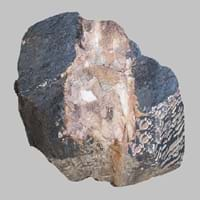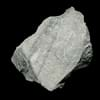Schist and Claystone
Definition
Definition
Schist is a medium grade metamorphic rock with medium to large, flat, sheet like grains in a preferred orientation
Claystone is a fine-grained, dark gray to pink sedimentary rock which mainly consists of compacted and hardened clay
History
Discoverer
Unknown
Unknown
Etymology
From French schiste, Greek skhistos i.e. split
From English clay and stone as the rock contains more amount of clay
Class
Metamorphic Rocks
Sedimentary Rocks
Sub-Class
Durable Rock, Medium Hardness Rock
Durable Rock, Medium Hardness Rock
Family
Group
Not Applicable
Not Applicable
Other Categories
Coarse Grained Rock, Fine Grained Rock, Medium Grained Rock, Opaque Rock
Fine Grained Rock, Opaque Rock
Texture
Texture
Foliated, Platy
Clastic
Color
Black, Blue, Brown, Dark Brown, Green, Grey, Silver
Black, Blue, Brown, Green, Grey, Orange, Red, White, Yellow
Maintenance
Less
More
Durability
Durable
Durable
Water Resistant
Yes
Yes
Scratch Resistant
No
Yes
Stain Resistant
No
No
Wind Resistant
No
No
Acid Resistant
No
No
Appearance
Layered and Shiny
Rough and Dull
Uses
Architecture
Interior Uses
Decorative Aggregates, Floor Tiles, Interior Decoration
Decorative Aggregates, Entryways, Floor Tiles, Homes, Interior Decoration
Exterior Uses
Garden Decoration, Paving Stone
As Facing Stone, Roof Tiles
Other Architectural Uses
Not Yet Used
Curbing
Industry
Construction Industry
As Dimension Stone, Building houses or walls, Cement Manufacture, for Road Aggregate, Roadstone
As a Sintering Agent in Steel Industry to process Iron Ore, Cement Manufacture, Construction Aggregate, for Road Aggregate, Making natural cement, Raw material for the manufacture of mortar
Medical Industry
Not Yet Used
Not Yet Used
Antiquity Uses
Artifacts
Artifacts, Sculpture, Small Figurines
Other Uses
Commercial Uses
Used in aquariums, Writing Slates
Pottery
Types
Types
Mica Schists, Calc-Silicate Schists, Graphite Schists, Blueschists, Whiteschists, Greenschists, Hornblende Schist, Talc Schist, Chlorite Schist, Garnet Schist, Glaucophane schist.
Not Available
Features
Easily splits into thin plates, Smooth to touch
Available in Lots of Colors and Patterns, Smooth to touch, Very fine grained rock
Archaeological Significance
Monuments
Not Yet Used
Not Yet Used
Famous Monuments
Not Applicable
Not Applicable
Sculpture
Not Yet Used
Used
Famous Sculptures
Not Applicable
Data Not Available
Pictographs
Used
Used
Petroglyphs
Used
Used
Figurines
Not Yet Used
Used
Fossils
Absent
Present
Formation
Formation
Schist formed by dynamic metamorphism at high temperatures and pressures that aligns the grains of mica, hornblende and other elongated minerals into thin layers.
Claystone is generally quite soft, but can be hard and brittle. It forms due to weathering of mudstone.
Composition
Mineral Content
Alusite, Amphibole, Biotite, Chlorite, Epidote, Feldspar, Garnet, Graphite, Hornblade, Kyanite, Micas, Muscovite or Illite, Porphyroblasts, Quartz, Sillimanite, Staurolite, Talc
Biotite, Chlorite, Feldspar, Micas, Muscovite or Illite, Plagioclase, Pyrite, Quartz
Compound Content
CaO, Carbon Dioxide, MgO
Aluminium Oxide, Ca, NaCl, CaO, Iron(III) Oxide, MgO, Silicon Dioxide
Transformation
Metamorphism
No
No
Types of Metamorphism
Not Applicable
Not Applicable
Weathering
Yes
Yes
Types of Weathering
Biological Weathering, Chemical Weathering, Mechanical Weathering
Biological Weathering, Chemical Weathering, Mechanical Weathering
Erosion
Yes
Yes
Types of Erosion
Chemical Erosion, Coastal Erosion, Glacier Erosion
Coastal Erosion, Water Erosion
Properties
Physical Properties
Hardness
3.5-4
3.5-4
Grain Size
Medium to Fine Coarse Grained
Fine Grained
Fracture
Conchoidal
Not Available
Streak
White
White
Porosity
Highly Porous
Very Less Porous
Luster
Shiny
Dull
Cleavage
Slaty
Perfect
Toughness
1.5
2.6
Specific Gravity
2.5-2.9
0
Transparency
Opaque
Opaque
Density
2.8-2.9 g/cm3
2-2.9 g/cm3
Thermal Properties
Specific Heat Capacity
Not Available
0.92 kJ/Kg K
10
Resistance
Impact Resistant, Pressure Resistant, Water Resistant
Heat Resistant, Impact Resistant
Reserves
Deposits in Eastern Continents
Asia
Afghanistan, Bangladesh, Bhutan, China, India, Japan, Kazakhstan, Malaysia, Pakistan, Russia, Thailand, Turkey, Vietnam
Bangladesh, China, India, Russia
Africa
Egypt, Ethiopia, Morocco, Nigeria, South Africa
Ethiopia, Kenya, Morocco, South Africa, Tanzania
Europe
Austria, England, France, Georgia, Germany, Italy, Liechtenstein, Monaco, Norway, Slovenia, Spain, Sweden, Switzerland
Austria, France, Germany, Greece, Italy, Romania, Scotland, Spain, Switzerland
Others
Not Yet Found
Not Yet Found
Deposits in Western Continents
North America
Canada, Costa Rica, Cuba, Mexico, Panama, USA
Canada, Panama, USA
South America
Brazil, Colombia, Guyana
Bolivia, Chile, Colombia, Ecuador, Peru, Venezuela
Deposits in Oceania Continent
Australia
New South Wales, New Zealand, Queensland
New South Wales, New Zealand, Queensland, Victoria, Western Australia
All about Schist and Claystone Properties
Know all about Schist and Claystone properties here. All properties of rocks are important as they define the type of rock and its application. Schist belongs to Metamorphic Rocks while Claystone belongs to Sedimentary Rocks.Texture of Schist is Foliated, Platy whereas that of Claystone is Clastic. Schist appears Layered and Shiny and Claystone appears Rough and Dull. The luster of Schist is shiny while that of Claystone is dull. Schist is available in black, blue, brown, dark brown, green, grey, silver colors whereas Claystone is available in black, blue, brown, green, grey, orange, red, white, yellow colors. The commercial uses of Schist are used in aquariums, writing slates and that of Claystone are pottery.
|
||
|
||
|










